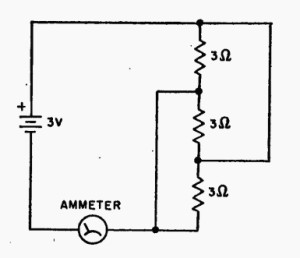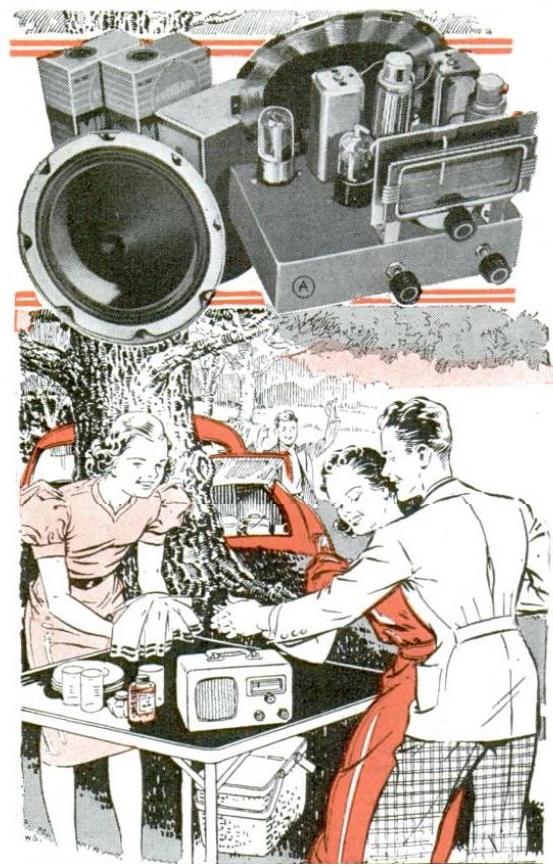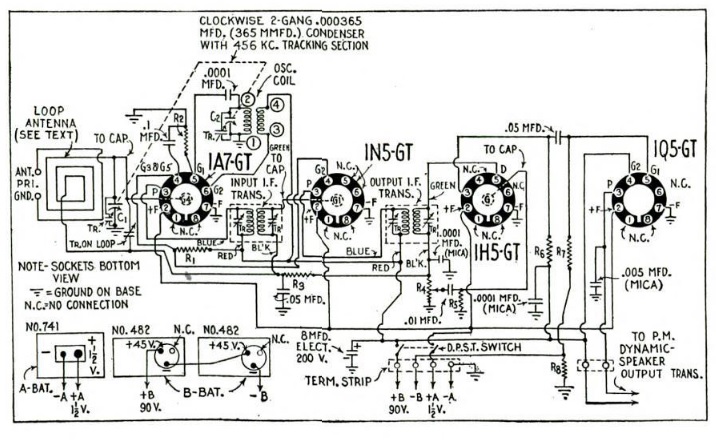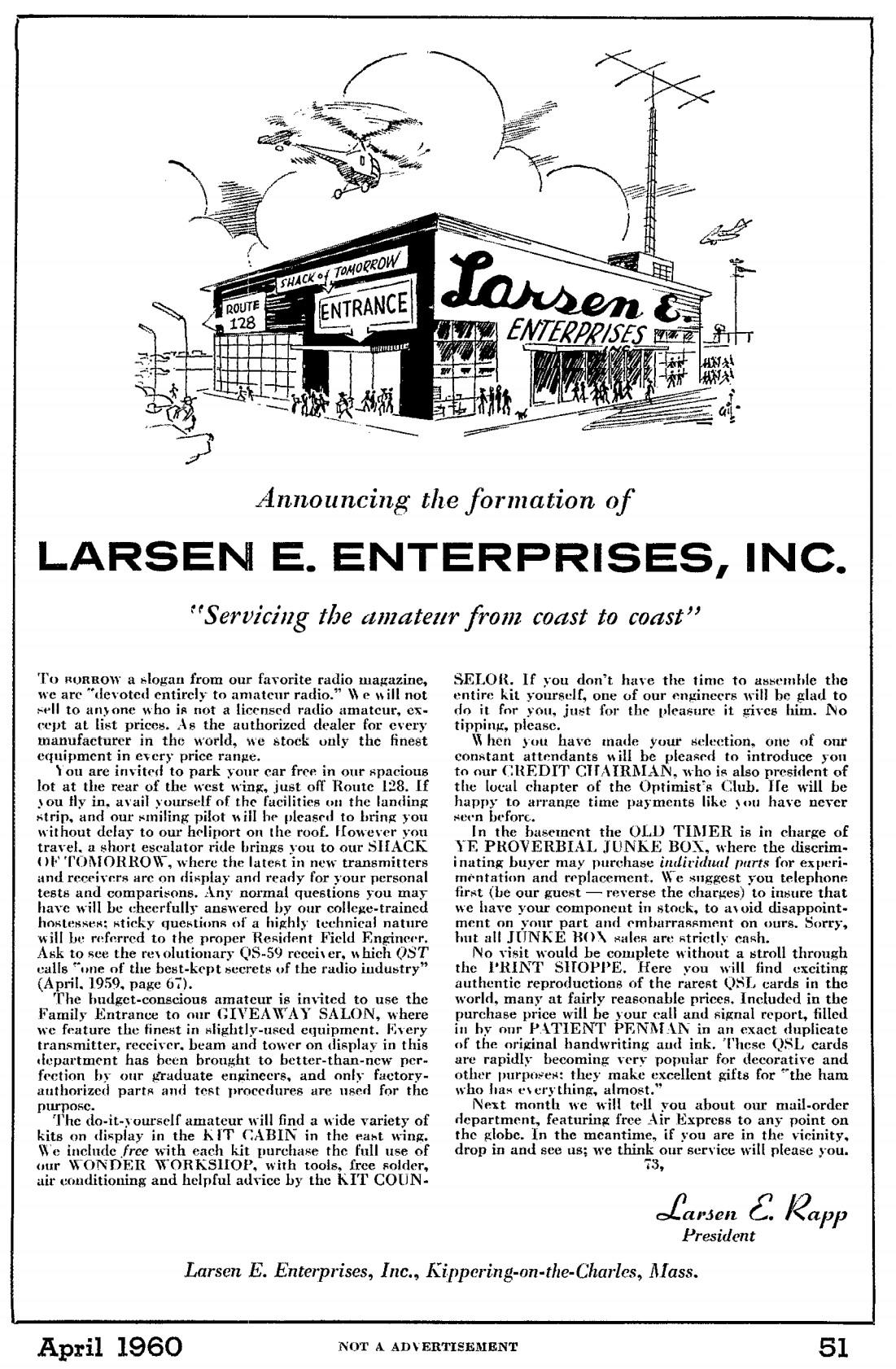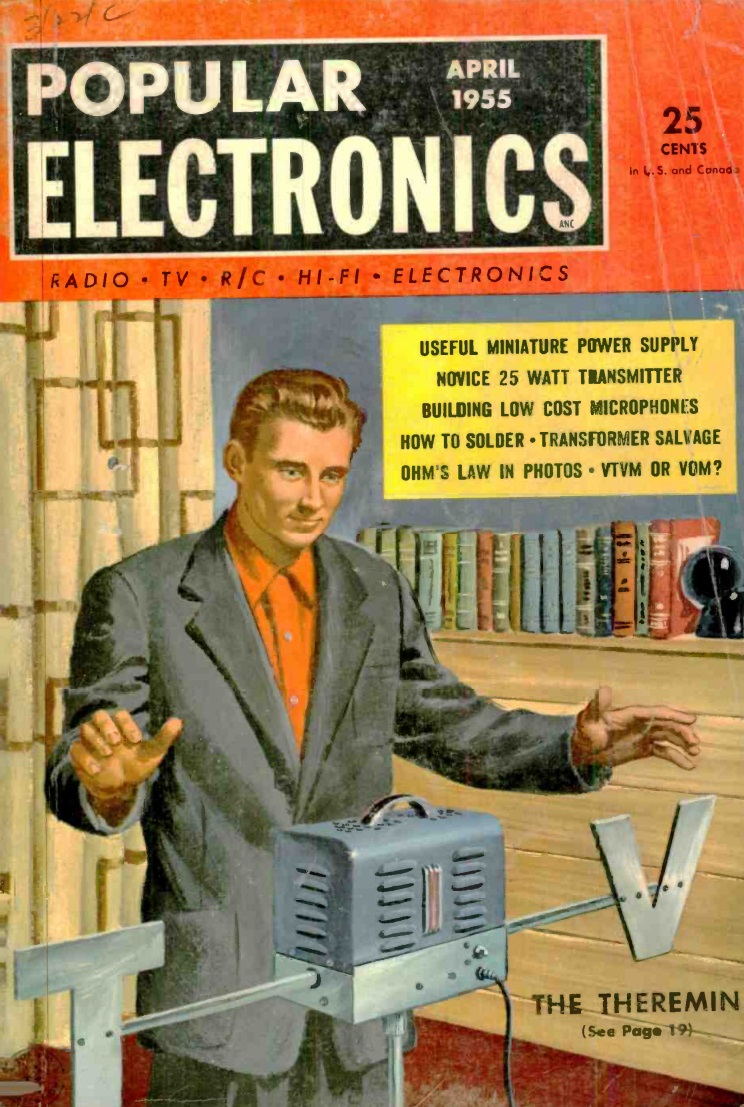
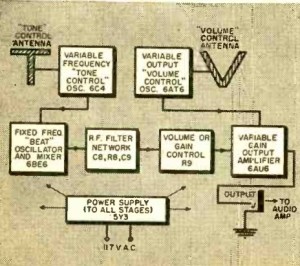 This musician-electronic hobbyist, shown on the cover of the April 1955 issue of Popular Electronics is playing the Theremin that he built according to the magazine’s plans. The magazine stressed that the project was not for beginners, but for those with some electronic experience, it was fairly easy to assemble.
This musician-electronic hobbyist, shown on the cover of the April 1955 issue of Popular Electronics is playing the Theremin that he built according to the magazine’s plans. The magazine stressed that the project was not for beginners, but for those with some electronic experience, it was fairly easy to assemble.
Once built, the owner could use the instrument to play music, or to provide background sound effects for amateur theatricals. “A complete show can be produced by combining its abilities to emit both music and sound effects.”
The instrument depended on hand capacitance on the two antennas. The one marked “T” was the tone. The variable capacitance changed the frequency of an RF signal generated by an oscillator. This was mixed with another oscillator to produce a heterodyne which was amplified. The “V” antenna controlled the volume.
Several column inches were devoted to instructions on how to play the instrument, the final one being: “Practice! Practice! Practice! Practice!” To give an idea of what the instrument sounds like for someone who did practice, here’s what a 1929 Theremin sounds like:
Building the Theremin today with modern solid-state components would probably be simpler, and definitely much cheaper than 65 years ago. You can buy a Theremin already assembled. If you just want to experiment with the concept, you can start with this inexpensive kit.

